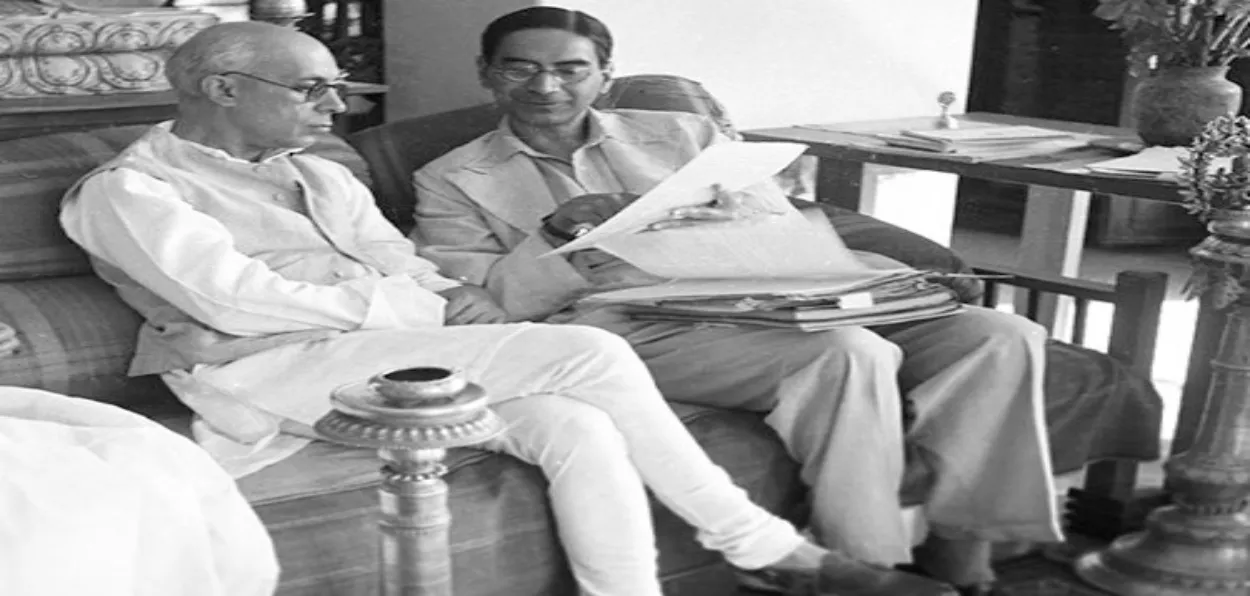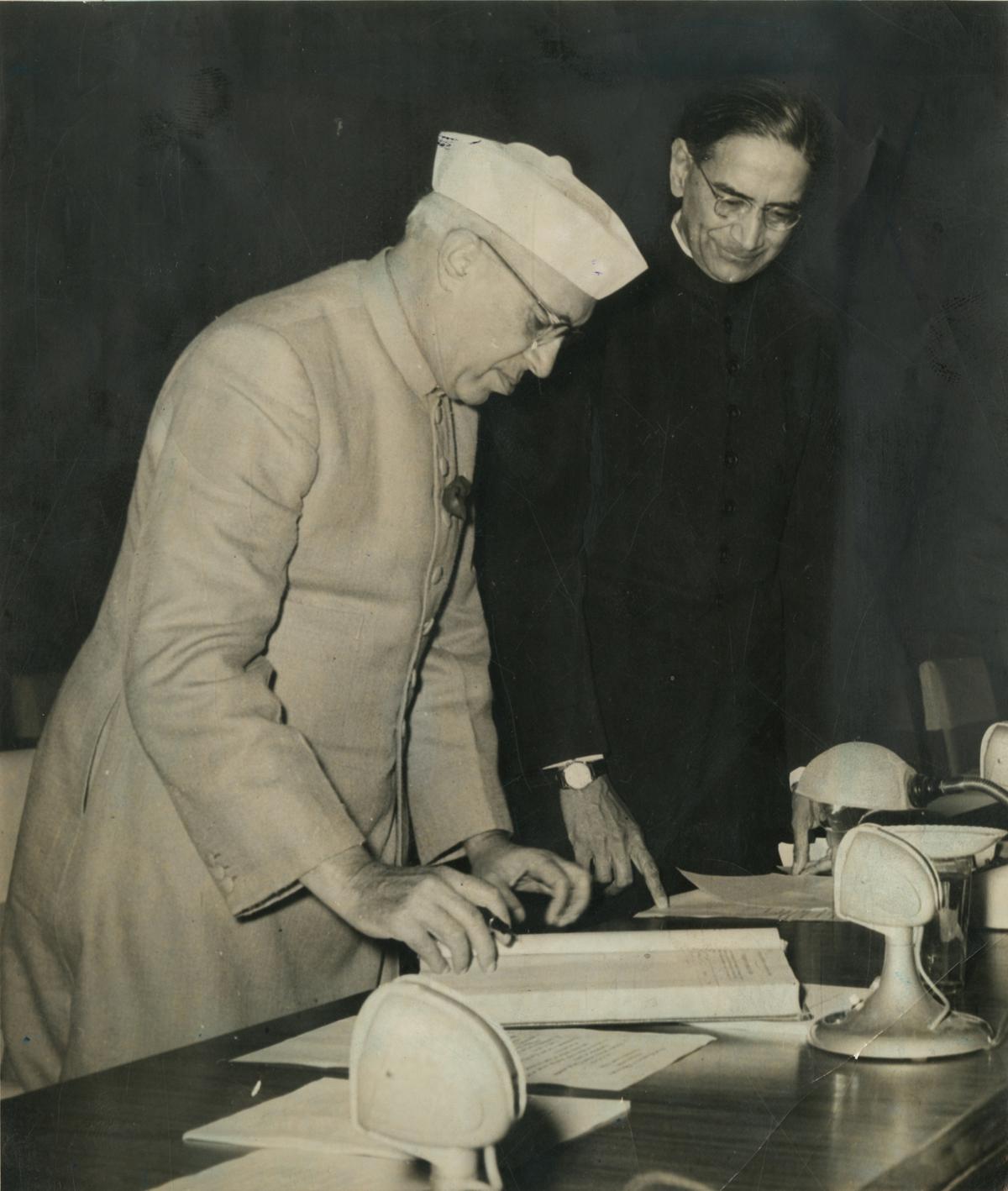
 Squib Salim
Squib Salim
When we recount the architects of modern India, the names of Nehru and Patel echo loudly in our collective memory. But there are other names, less celebrated but no less significant—a name that quietly stitched together the statistical soul of a nation.
Prasanta Chandra Mahalanobis, whose birthday on June 29th is commemorated as National Statistics Day, is a testament to how one man’s passion for numbers gave a young nation the tools to measure, and thus to dream.
Let’s journey back to the early 20th century. India, still under colonial rule, was a country of farmers and artisans, its economy agrarian, its administrative machinery creaking under the weight of tradition and neglect. In this landscape, Mahalanobis emerged—a rare blend of mathematical genius and compassionate visionary. Unlike those who cloistered themselves in ivory towers, Mahalanobis believed mathematics could, and should, tell the stories of ordinary people: their crops, their health, their hopes, and their struggles.

Mohanlannobis, and his wife with Rabinder Nath Tagore
Mahalanobis’s most enduring gift to the world is the “Mahalanobis distance.” At first glance, it might sound like a cold, technical term. But its roots are profoundly human. Mahalanobis was driven by a desire to understand the breathtaking diversity of India’s people. Using anthropometric data—measurements of the human body—he crafted a method to compare groups, not just by simple averages, but by the intricate web of relationships between multiple characteristics.
This wasn’t merely a mathematical innovation; it was a tool that allowed scientists to see, for the first time, the subtle interplay of genetics, environment, and culture. In Salim’s style, we might say Mahalanobis gave India a mirror—one that reflected not just faces, but the rich tapestry of its people.
Yet, Mahalanobis was never satisfied with the theory alone. His genius lay in turning ideas into instruments of change. In an era when government estimates of crop yields were little more than educated guesses, Mahalanobis introduced the revolutionary concept of random sampling. By meticulously selecting representative plots and applying rigorous statistical analysis, he produced estimates that were not only accurate but also just—ensuring that the voices of farmers and the realities of rural India were heard. This pioneering work laid the foundation for the National Sample Survey (NSS), which remains, to this day, the gold standard for large-scale data collection in India.
What truly set Mahalanobis apart was his relentless drive to build institutions. He understood that for statistics to flourish, it needed a home—a sanctuary where young minds could be nurtured, research could thrive, and the nation’s most pressing problems could be addressed with scientific precision. Thus, in 1931, the Indian Statistical Institute (ISI) was born. The ISI was more than a research center; it was a crucible for new ideas, a melting pot where mathematicians, economists, biologists, and social scientists could collaborate. Under Mahalanobis’s guidance, the ISI became a beacon of excellence, attracting talent from across India and beyond.
Mahalanobis, however, was not without his critics. His leadership style could be imperious, his expectations towering. He demanded not just competence, but commitment; not just skill, but a sense of mission. Some found his methods autocratic; others saw in him a mentor who inspired greatness. This duality is best captured by the metaphor of the “big banyan tree”—Mahalanobis provided shelter and nourishment, but his towering presence could sometimes cast a shadow over those around him.

Mahalanobis with PM Jawahar Lal Nehru
As Ashok Rudra’s biography reveals, Mahalanobis saw data not as mere numbers, but as the lifeblood of effective governance. This conviction found its most powerful expression in his work on the Second Five-Year Plan, where he developed the “Mahalanobis model.” This statistical framework guided India’s economic planning in the crucial years after independence, emphasizing the importance of heavy industry and long-term investment. It was a bold experiment—one that shaped the trajectory of Indian development for decades.
Mahalanobis’s influence extended far beyond India’s borders. He was a global ambassador for statistics, working with the United Nations and other international bodies to promote the use of scientific methods in economic and social planning. His advocacy helped put India on the world map as a leader in statistical innovation, and his techniques were adopted by countries across Asia and Africa.
Building a new discipline in a country as vast and diverse as India was no easy task. There were debates about the balance between theory and application, about the place of statistics in public policy, and about the need for interdisciplinary collaboration. Mahalanobis navigated these challenges with a blend of intellectual rigor and practical wisdom, always keeping his eye on the larger goal—the creation of a modern, self-reliant India.
By all accounts, Mahalanobis was a man of immense curiosity, warmth, and generosity. He inspired loyalty and affection in his students and colleagues, many of whom went on to become leaders in their own right. Yet he was also capable of great impatience, especially with those who failed to share his passion for scientific inquiry and national service.
Today, Mahalanobis’s legacy is everywhere. Every time a government report cites data from the NSS, every time a policymaker uses statistical models to make decisions, every time a young student at the ISI dreams of using mathematics to change the world—they are all, in a sense, heirs to Mahalanobis’s vision.
In a country that often forgets its scientific heroes, Mahalanobis’s story is a timely reminder of what can be achieved when intellect is matched by courage, and when science is put in the service of society. His life is a testament to the power of perseverance, the importance of institutions, and the enduring value of evidence-based decision-making.
READ MORE: From files to the finish line: Anisa Nabi's unique race
So, the next time we hear about a new government survey, a breakthrough in data science, or a policy shaped by evidence, let’s remember the quiet genius from Bengal who showed us the way. Prasanta Chandra Mahalanobis may not be a household name, but his ideas are woven into the very fabric of modern India—a legacy that continues to inspire and guide us, even today.
